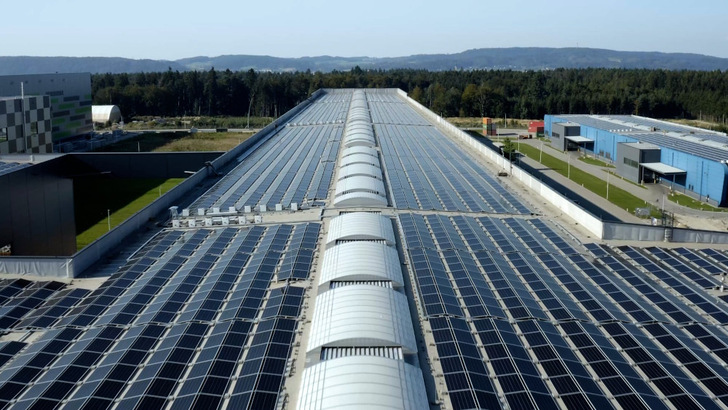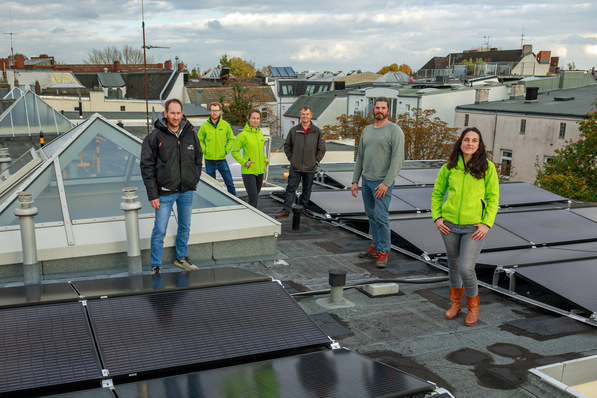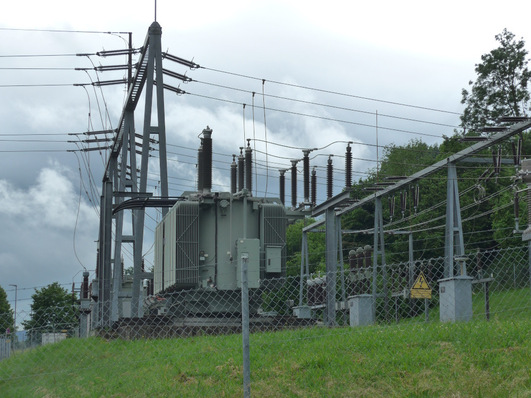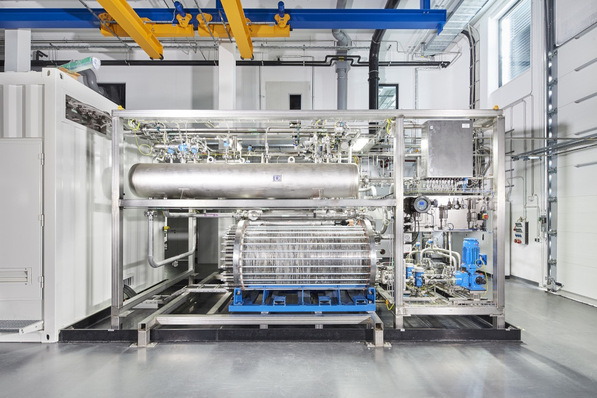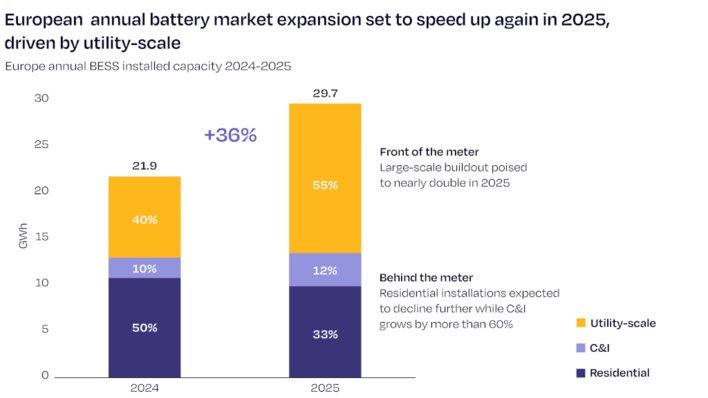The countries of Europe have formulated similar targets regarding the expansion of renewable energies. The countries in which we operate as CCE are planning to generate around 30% of their electricity requirements from sustainable resources by 2030. Germany stands out with its ambitious target of 65 %. It is uncertain that all countries will be able to achieve the EU target of switching to 100 % renewable energy by 2050. Nevertheless, we should come as close as possible. Future generations will judge us by this. Switching to emission-free forms of energy is essential for this. Theoretically plausible, practically challenging:
Electricity is generated sustainably as soon as the sun is shining or the wind is blowing. However, the challenge is to ensure continuity of supply, as currently with fossil fuels, hydropower, and nuclear power. The realisation is national, but the basic orientation should be considered on a transnational basis. Only together it will be possible to ensure the necessary assertiveness, technology, political support, and financial framework for a reorientation of energy generation in Europe.
Grid infrastructure and flexibilization
To achieve the goals of the EU Green Deal, the expansion of the grid infrastructure and the flexibilization of energy generation are fundamental. One cannot be achieved without the other. For us as CCE, the consequence is to invest in battery systems alongside the development and expansion of PV systems.
The same applies to hydrogen. It must also be possible to permanently store the electricity produced and utilise it when required. This is why every new renewable energy source that is connected to the grid requires a flexible balancing technology to ensure grid stability.
Balancing technologies and energy storage solutions
In Germany, the exit from nuclear power and, soon afterwards, from the coal industry will lead to the loss of significant capacities for flexible energy generation. As a result, the need for storage options is increasing here more than in other EU countries.
Did you miss that? Corporate hourly clean energy matching scores
Due to the heterogeneity of the markets, it is not possible to draw up a blueprint for Europe as a whole. The countries must be considered individually in terms of their political, regulatory, and social circumstances. In principle, battery systems are relevant for all countries with a CCE location to protect the grids from localised overloads. Otherwise, in all areas with large wind and PV parks, the sustainably generated electricity would have to be throttled at peak times.
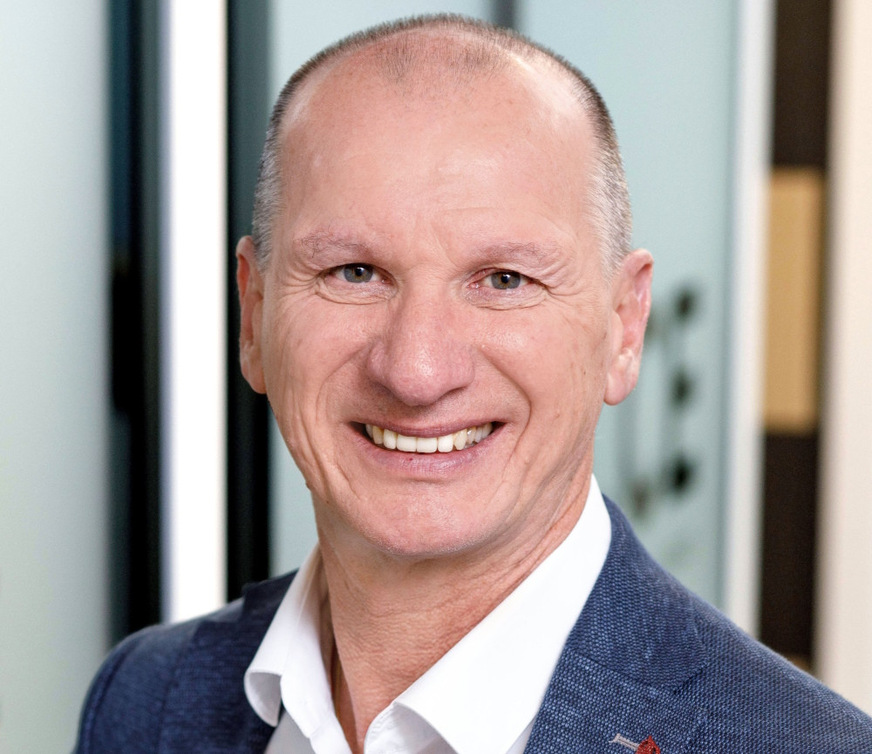
CCE
This is not profitable for the operators and for us as CCE it is a key argument in favour of investing in battery storage.
But even batteries cannot store energy infinitely, for example from summer months into winter. For us, an electricity storage battery is a solution for balancing the grid in the short term. Other technologies, such as green hydrogen, are better for long-term storage.
The future depends on the grids
Stakeholders and IPPs like us only have a limited influence on Europe-wide grid expansion. We are dependent on the individual governments and grid operators prioritising this issue to define and implement solutions.
It is the task of all parties involved to raise public awareness that green energy is only possible with viable grids and new transmission systems. After all, this is essential for the European energy transition and the fulfilment of the targets that have been set.
A look at the individual countries:
Eastern Europe/Romania
Romania is characterised by a strong political will to facilitate renewable energies. Projects can be developed more quickly here than in Germany. Lower bureaucratic hurdles are also helpful, for example in environmental impact analyses, which are usually carried out quickly. The necessary grid expansion is planned but is also a matter of years. One positive aspect for us as an independent electricity producer is that the available grid capacities are disclosed transparently.
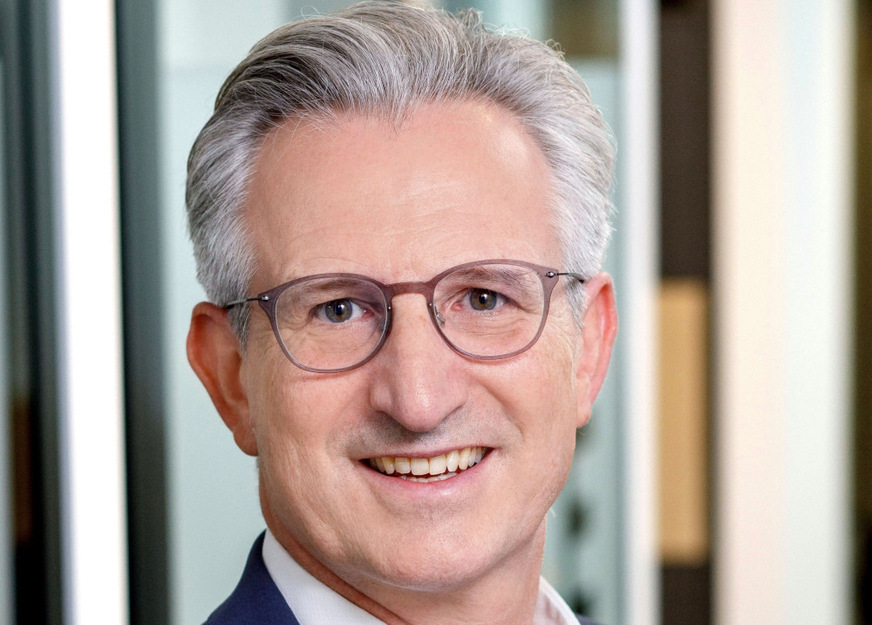
CCE
France
In France, we have a special situation because the percentage of nuclear power is still high. Nuclear energy is seen by society there as a green, emission-free source of energy. However, we are noticing a growing interest in wind and solar energy through our national organisation. To accelerate the expansion of the grid, balancing energy is required, which can be provided by gas-fired power plants or batteries, for example. Our forecast for France is that significantly more green electricity will be generated, but that nuclear power will remain highly relevant in the medium and long term.
Italy
CCE has been active in Italy since 2011 and is therefore currently developing, constructing, and operating the largest number of ground-mounted PV and agrivoltaic systems in our group. Despite regular optimisation efforts by the government, bureaucratic processes continue to act as a brake on growth. Unfortunately, excessive authorisation procedures often lead to delays in project development. In Italy, the grid is only a hurdle in rare cases. To optimise the existing, very good expansion opportunities, the procedures must be simplified and access to the electricity grid must be expanded quickly. In the south of Italy, CCE is already developing its first projects to produce green hydrogen.
The Netherlands
CCE is active to a very limited extent in the Netherlands, as hardly any grid connections or feed-in licences are currently being issued. We tend to invest in existing rooftop and ground-mounted systems, which we take over and operate. In the Netherlands, the use of storage solutions is also a sensible option to relieve the complete grid.
Austria
Grid capacity is also an issue in Austria. However, this is not severe currently, as the share of renewables is low in general, and therefore the grid isn´t under such strain yet. The challenge is rather that large ground-mounted systems are more difficult to realise due to regulatory hurdles in the approval process. Historically, CCE started in Austria with a strong focus on the rooftop business. We financed and installed the country's largest PV system on the roof of AMAG, an aluminium group, for example. In addition to ground-mounted PV systems, the roof segment will continue to be our long-term focus, as we still see huge potential in Austria.
Also interesting: „Enhance the grid’s pivotal role in enabling decarbonisation“
Germany
In Germany, the political ambition to exit from nuclear energy and coal as well as the pursuit of independence from Russian gas are strong growth drivers. This is why Germany is one of our most important future markets. However, the change in the electricity mix requires significant investment in the grid and balancing capacities, particularly in Germany. We are facing major political and financial challenges here. When expanding grid capacities, it is also important to get the population on board and to defuse the debates on the north-south route and wind farms. These controversies are unfortunately slowing down the energy transition considerably. (Martin Dürnberger/ Jörg Menyesch /hcn).


